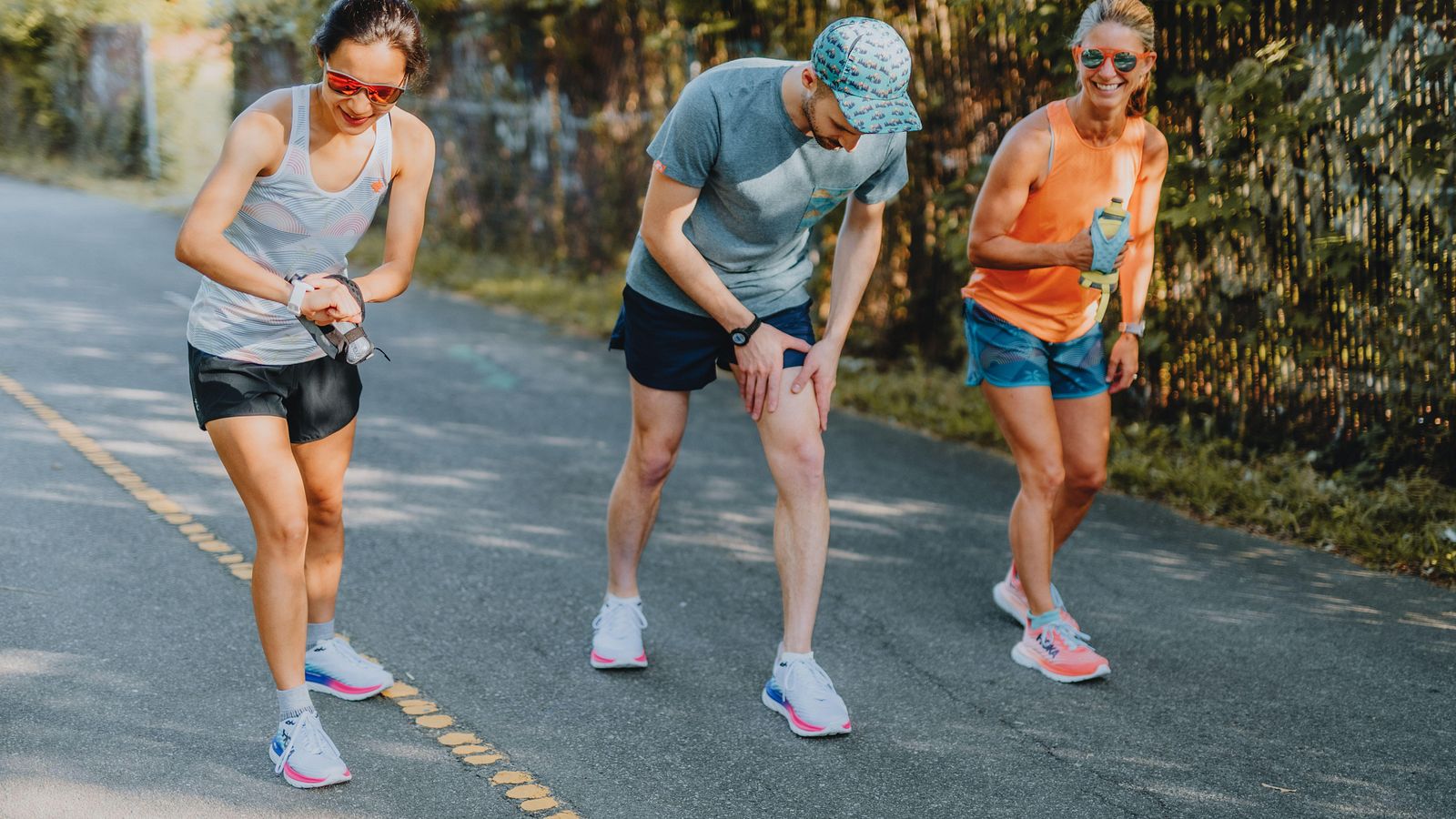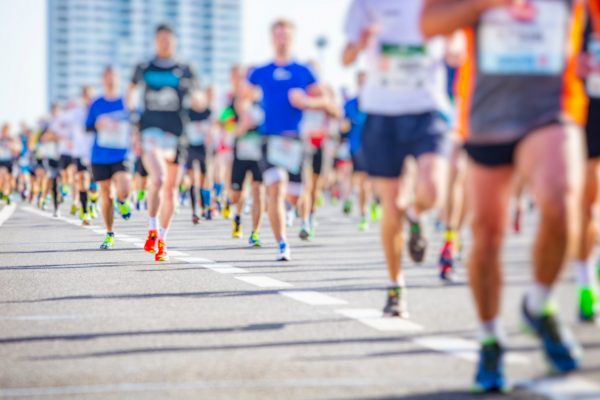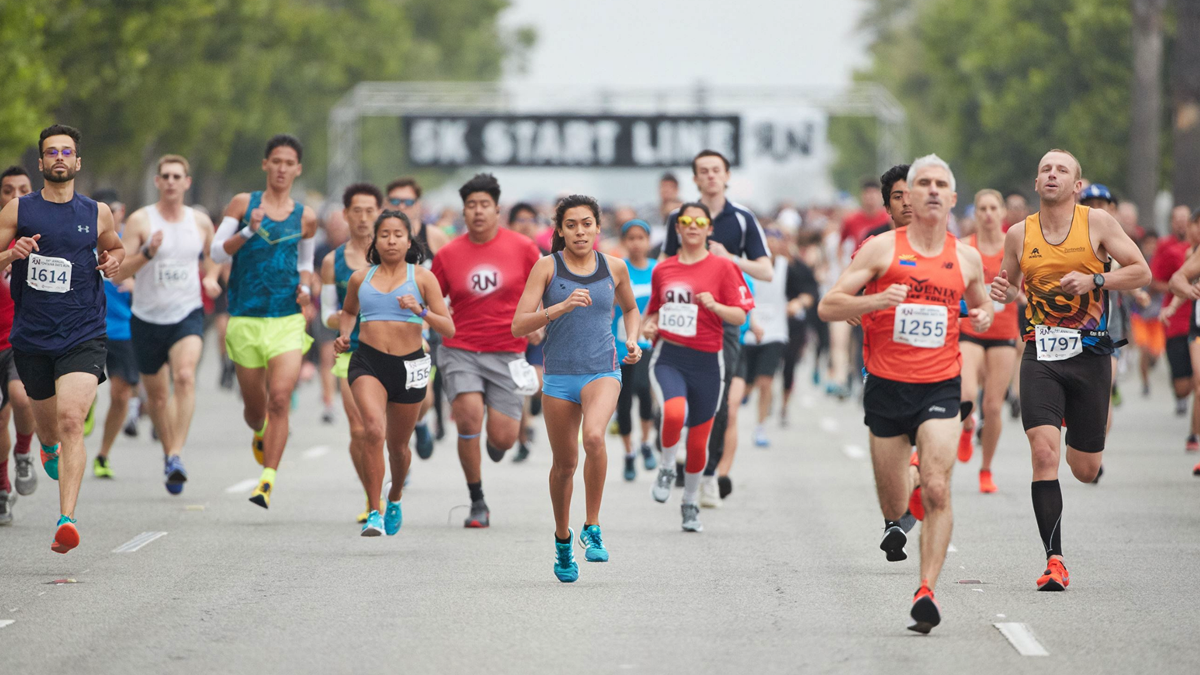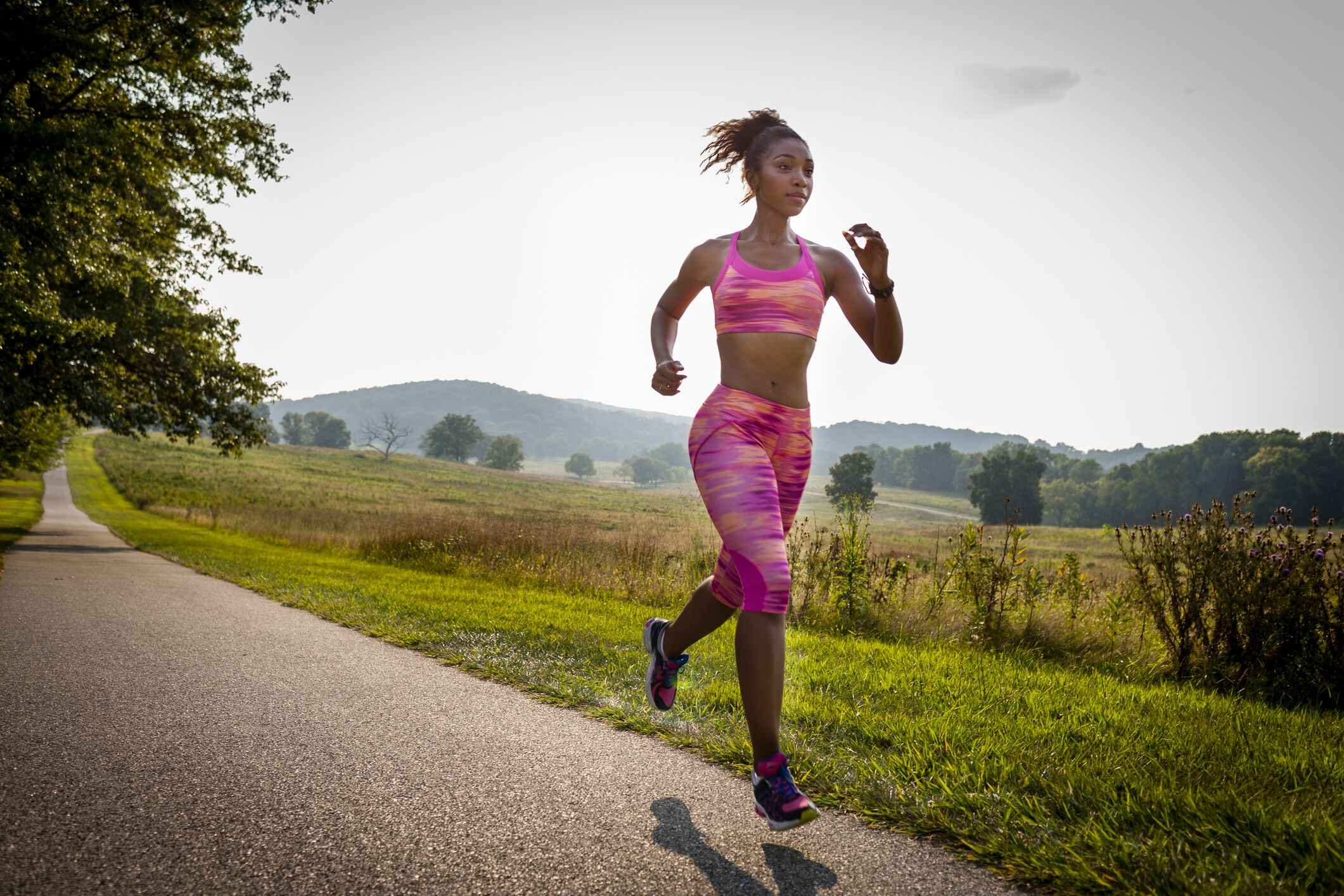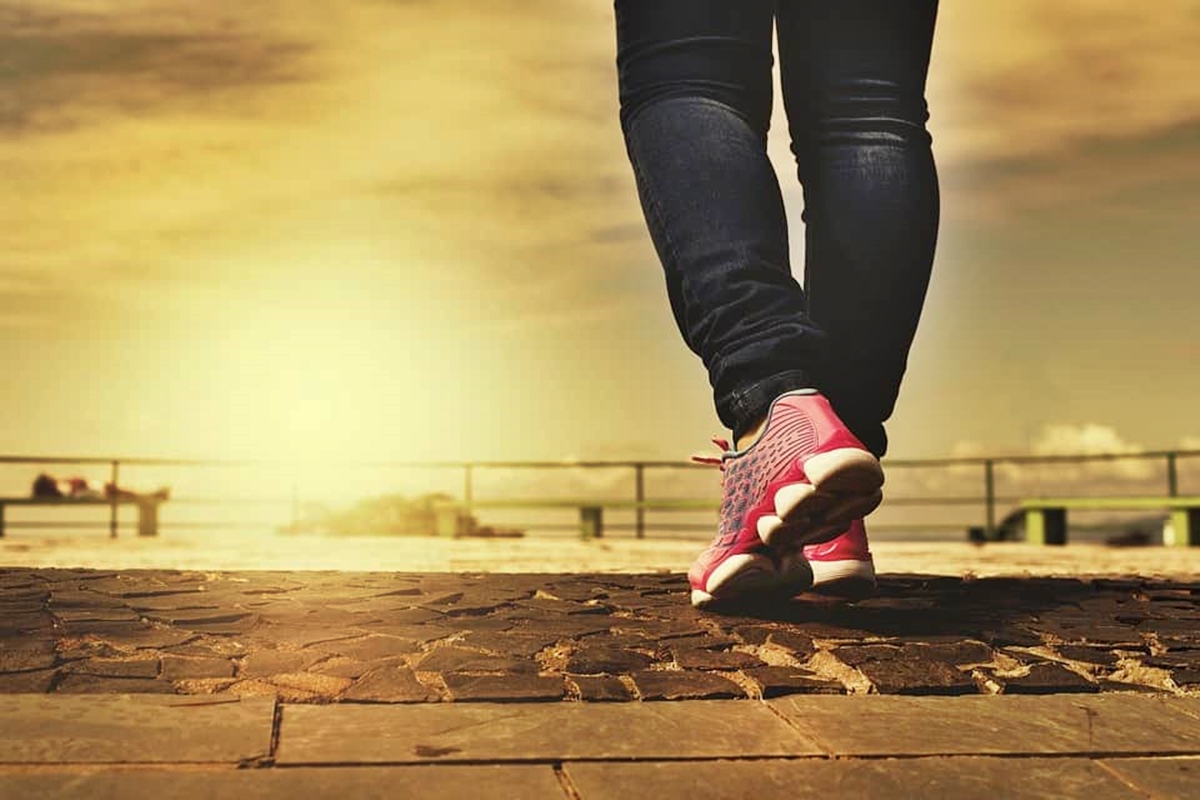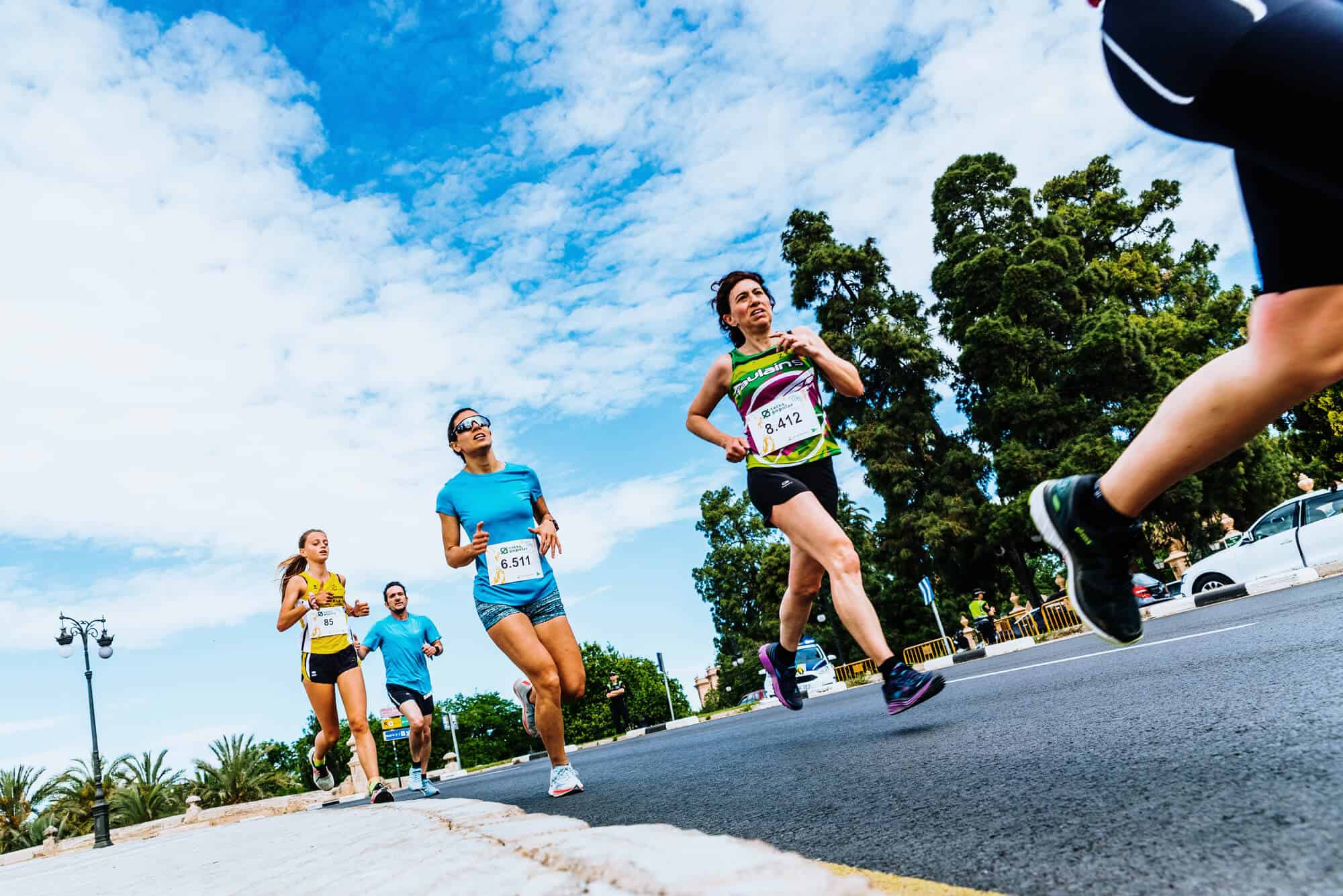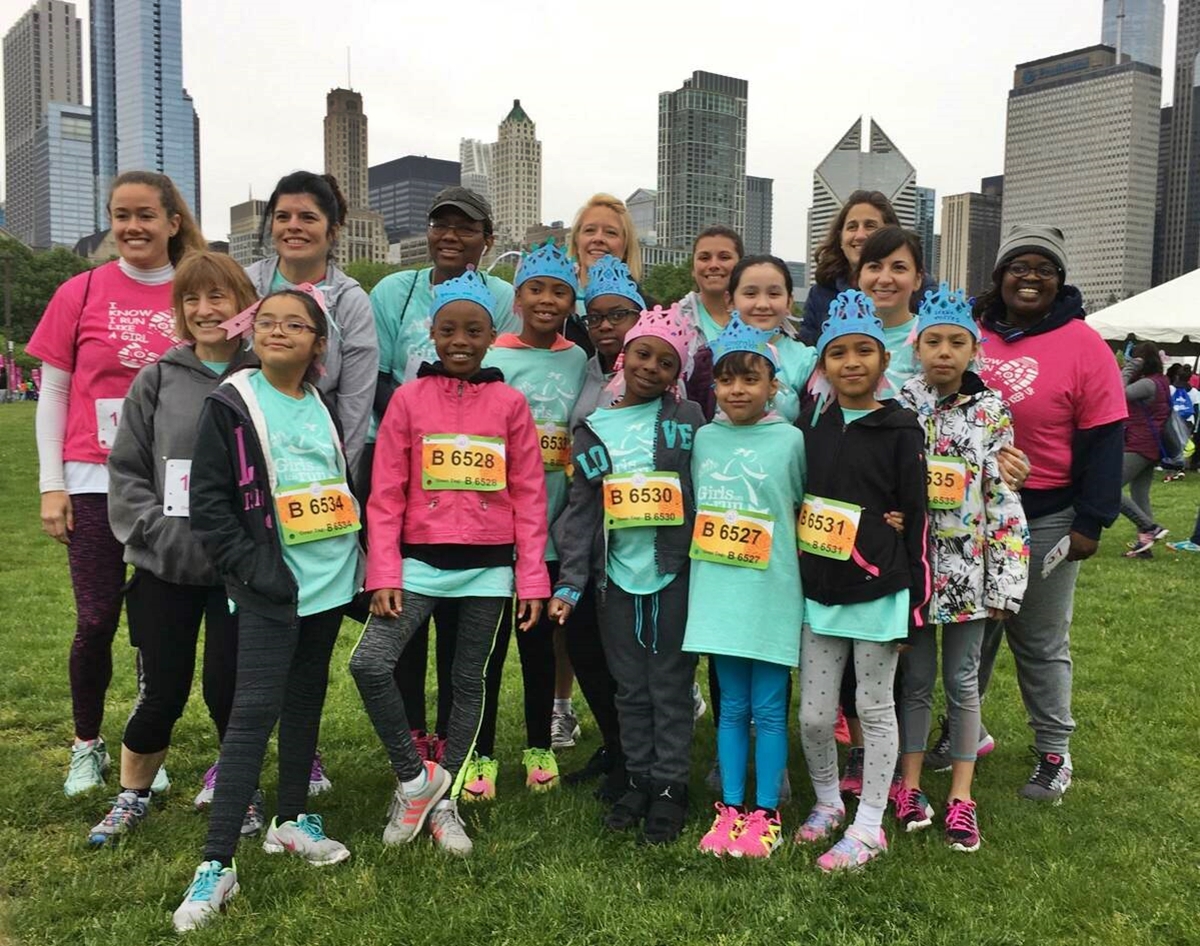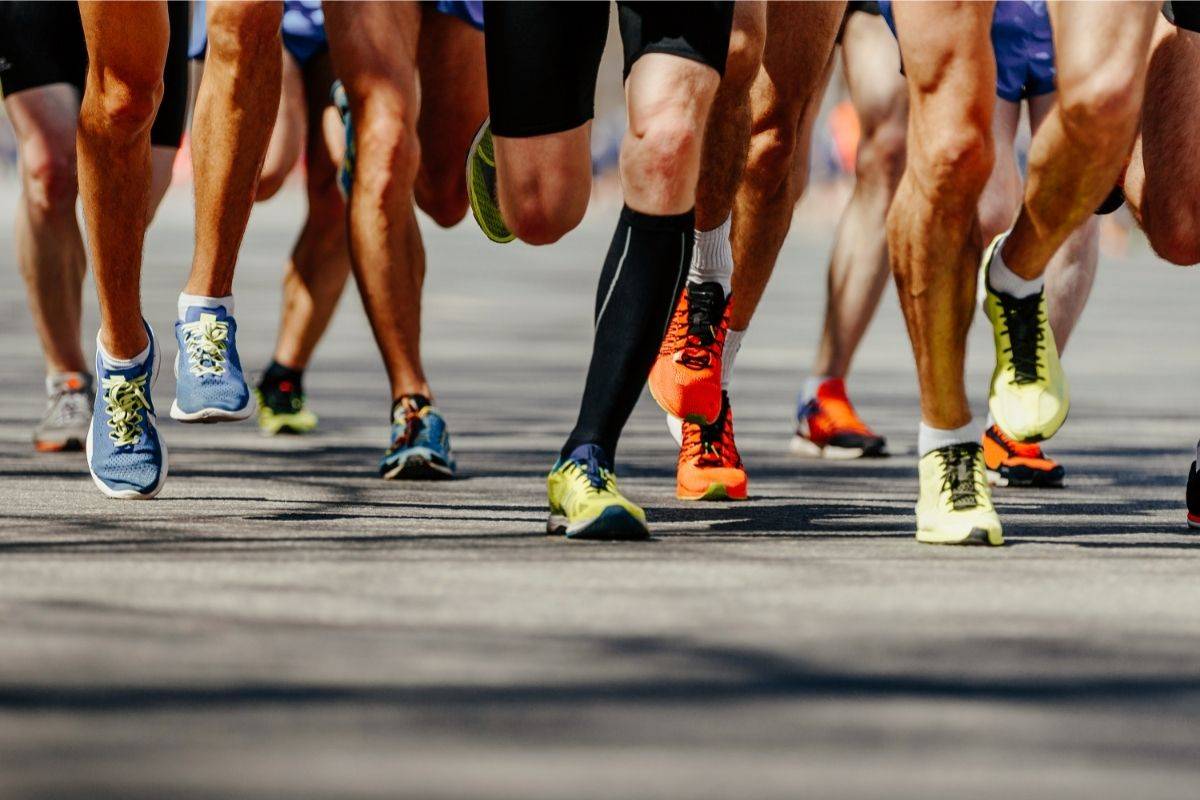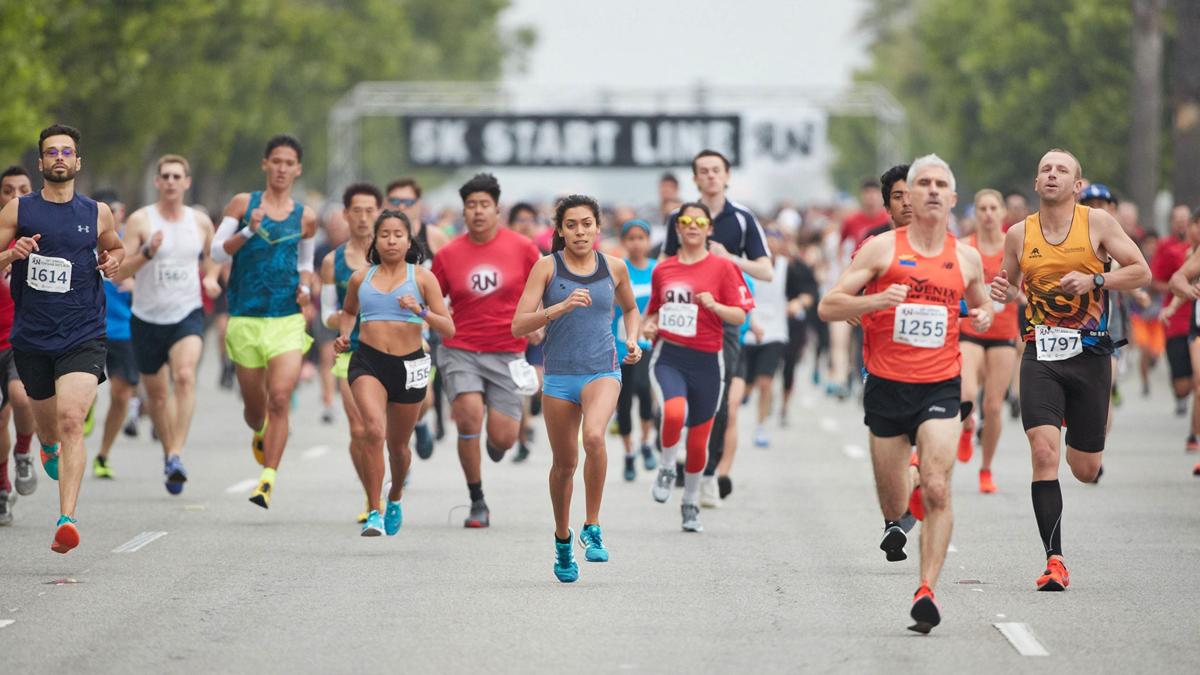

Featured
What To Wear In A 5K Run
Modified: January 2, 2024
Looking for the perfect outfit for your upcoming 5K run? Check out our featured collection for stylish and comfortable options that will help you conquer the race!
Introduction
Welcome to the world of 5K running, where the challenge and thrill of completing a race can be both exhilarating and rewarding. Whether you are a seasoned runner or a beginner, one of the most important aspects to consider when preparing for a 5K run is your choice of clothing. The right apparel can make all the difference in your performance, comfort, and overall experience.
When it comes to choosing the perfect running outfit for a 5K, there are several factors to consider. The clothing you wear should not only be functional but also comfortable, breathable, and suitable for the weather conditions. From the top you wear to the shoes on your feet, every piece of clothing plays a crucial role in helping you achieve your best performance.
In this article, we will explore the various aspects of choosing the right clothing for a 5K run. We will discuss the importance of selecting appropriate running clothes, the factors to consider when making your choices, and we’ll provide some helpful tips for dressing appropriately in different weather conditions. So, whether you’re preparing for your first 5K or looking to improve your running gear, read on to discover how to dress for success on race day.
Importance of Choosing the Right Clothing for a 5K Run
When it comes to participating in a 5K run, it’s vital to choose the right clothing to ensure a comfortable and successful race. The right outfit can have a significant impact on your performance, motivation, and overall experience. Here are some reasons why selecting appropriate running clothes is crucial:
- Comfort: Running in uncomfortable clothing can hinder your performance and distract you from achieving your goals. The right apparel should fit well, allowing for ease of movement and preventing any unnecessary chafing or irritation.
- Moisture Wicking: Running is a sweaty activity, and wearing clothes that are moisture-wicking will help keep your body dry and prevent discomfort. Moisture-wicking fabrics draw sweat away from your skin, allowing it to evaporate quickly and keeping you cool throughout the race.
- Temperature Regulation: The right clothing can help regulate your body temperature, keeping you comfortable during the race. In warmer weather, opt for lightweight, breathable fabrics that allow air circulation. In colder temperatures, layering can help provide insulation while still allowing for mobility.
- Performance Enhancement: The right running clothing can enhance your performance by providing the necessary support and functionality. Compression gear can improve blood circulation and reduce muscle fatigue, while lightweight and aerodynamic fabrics can optimize your movements.
- Motivation: Wearing the right outfit can boost your confidence and motivation levels. When you feel good in what you’re wearing, it can positively affect your mindset and give you an extra push to reach your goals.
By choosing the right clothing for your 5K run, you can maximize your comfort, performance, and enjoyment throughout the race. It’s important to invest in high-quality attire that is designed specifically for running, as it will provide the necessary features and benefits to help you excel.
Factors to Consider when Choosing Running Clothes
When it comes to selecting the perfect running clothes for a 5K run, there are several factors to keep in mind. Consider the following elements to ensure you make the right choices:
- Fit: The fit of your running clothes is essential for both comfort and performance. Opt for clothing that is neither too tight nor too loose, allowing for unrestricted movement while providing enough support. Look for styles that have a slight give and accommodate your body shape.
- Material: The material of your running clothes is crucial for breathability and moisture management. Lightweight, synthetic fabrics such as polyester and nylon are excellent choices as they wick away sweat and dry quickly. Avoid cotton, as it tends to absorb moisture and can lead to discomfort.
- Weather Conditions: Consider the weather conditions you’ll be running in and choose clothing accordingly. In warm weather, go for lighter, moisture-wicking fabrics that allow for airflow. In colder temperatures, layer your clothing to trap warmth and opt for reflective gear if running in low-light conditions.
- Visibility: Safety should be a priority when choosing running clothes. Look for clothing that has reflective elements, especially if you’ll be running during dawn or dusk. Bright colors can also increase your visibility to motorists and other runners.
- Comfort: Prioritize comfort when selecting running clothes. Pay attention to details such as flat seams or no tags to prevent chafing. Consider features like adjustable waistbands or zippers for ventilation to enhance your comfort during the run.
- Durability: Running clothes should be durable enough to withstand the rigors of regular use. Look for quality construction and durable fabrics that can stand up to frequent washing and maintain their shape and functionality over time.
By considering these factors when choosing your running clothes, you can ensure that you are properly equipped for a comfortable and successful 5K run. Remember, finding the right balance between style, functionality, and comfort is key to optimize your performance and enjoyment on race day.
Tops for a 5K Run
Choosing the right top for a 5K run is essential for your comfort and performance. Here are some top options to consider:
- Moisture-Wicking T-Shirt: Opt for a lightweight, moisture-wicking t-shirt that helps keep you dry and cool throughout the race. Look for materials like polyester or nylon that effectively wick away sweat from your body.
- Running Singlet: A running singlet is a sleeveless top that provides maximum range of motion for your arms. This option is great for warm weather or for those who prefer a minimalistic feel while running.
- Long Sleeve Shirt: In cooler weather, a long sleeve shirt made from breathable fabrics can provide warmth and protection. Look for shirts with thumbholes to keep your sleeves in place and provide extra coverage for your hands.
- Compression Top: Compression tops can provide a snug fit and help improve blood circulation and muscle support. These tops are great for reducing muscle fatigue and improving recovery post-race.
- Layering: When running in fluctuating temperatures, layering is key. Start with a moisture-wicking base layer and add a lightweight, breathable jacket or hoodie for added warmth. This allows you to easily adjust your clothing as your body temperature changes.
- Reflective Features: Look for tops with reflective elements if you plan to run during low-light conditions. Reflective strips or logos can help increase your visibility to others on the road, ensuring your safety.
Remember to consider factors such as fit, material, and the weather conditions when choosing your top for a 5K run. It’s important to prioritize comfort and functionality to ensure an enjoyable and successful race.
Bottoms for a 5K Run
Choosing the right bottoms for a 5K run is crucial for your comfort, mobility, and performance. Here are some options to consider:
- Running Shorts: Running shorts are a popular choice for their lightweight and breathable nature. Look for shorts with built-in briefs or compression liners for added support and moisture-wicking capabilities.
- Capri Leggings: Capri leggings are a versatile option that provides coverage and support while still allowing freedom of movement. They are great for cool or transitional weather conditions.
- Tights: Tights are ideal for colder temperatures, as they offer more coverage, insulation, and protection from the elements. Look for tights with moisture-wicking properties and a snug, comfortable fit.
- Compression Pants: Compression pants provide muscle support, improve circulation, and help reduce fatigue during and after a run. They can be a great choice for both performance and recovery purposes.
- Skirts: Skirts with built-in compression shorts are a popular choice for female runners. They offer a feminine touch while providing the comfort and functionality of shorts.
- Mid-Length or Full-Length Tights: If you prefer more coverage or need extra warmth, consider mid-length or full-length tights. These options are suitable for colder weather conditions.
When choosing your bottoms for a 5K run, consider factors such as the fit, material, and weather conditions. Look for bottoms that allow for ease of movement, provide moisture-wicking properties, and offer the right level of support.
Remember, the key is to prioritize comfort, functionality, and personal preference when selecting your running bottoms. Finding the right pair will help you perform at your best and enjoy a successful race.
Shoes and Socks for a 5K Run
Choosing the right shoes and socks for a 5K run is vital for your comfort, support, and overall performance. Here are some considerations when selecting your footwear:
- Running Shoes: Invest in a good pair of running shoes that are specifically designed for your running style and foot shape. Look for shoes that provide adequate cushioning, support, and stability to prevent injuries and enhance your running efficiency.
- Proper Fit: Ensure that your running shoes fit correctly. They should have enough room for your toes to wiggle, but still provide a snug fit around your heel to prevent slipping. Consider getting fitted at a specialty running store for professional advice.
- Break-In Period: Give yourself enough time to break in your new running shoes before race day. This will help prevent discomfort and blisters during the 5K run.
- Moisture-Wicking Socks: Opt for moisture-wicking socks that help keep your feet dry and reduce the risk of blisters. Look for socks made from synthetic materials like polyester or nylon rather than cotton, as cotton tends to retain moisture.
- Cushioning and Support: Consider the level of cushioning and support you need based on your running style and personal preference. Some runners prefer minimalist shoes, while others require more cushioning for added comfort and shock absorption.
- Replace Old Shoes: Regularly assess the condition of your running shoes and replace them when they show signs of wear and tear. Running in worn-out shoes can lead to discomfort and increase the risk of injuries.
Remember that everyone’s feet are different, so it’s important to find the shoes and socks that work best for you. Take the time to research and try out different options to find the perfect combination that offers comfort, support, and enhances your running performance.
Accessories for a 5K Run
When it comes to running a 5K, there are certain accessories that can enhance your experience and keep you prepared. Here are some essential accessories to consider:
- Running Watch or Fitness Tracker: A running watch or fitness tracker can help you track your distance, pace, and heart rate during the 5K run. It provides valuable data that can help you monitor your progress and set new goals.
- Hydration Belt or Water Bottle: Staying hydrated is crucial during a 5K run. Consider using a hydration belt or carrying a handheld water bottle to have easy access to water along the route.
- Headphones: If you enjoy listening to music while running, invest in a good pair of headphones. Look for wireless options or those that are designed specifically for running to ensure they stay in place and offer good sound quality.
- Running Belt or Armband: A running belt or armband can keep your essentials, such as keys, identification, and energy gels, secure and easily accessible during the race.
- Hat or Visor: Protect yourself from the sun or rain by wearing a hat or visor. Look for options with moisture-wicking properties and a wide brim to shield your face from the elements.
- Sunglasses: Shield your eyes from sun glare and protect them from debris by wearing sunglasses specifically designed for running. Choose a lightweight and durable option that offers UV protection.
- Race Bib Belt: Consider a race bib belt to securely and comfortably attach your race bib without the need for pins. It provides a hassle-free way to display your bib during the 5K run.
- Compression Sleeves/Braces: If you have specific areas of concern or previous injuries, consider using compression sleeves or braces to provide extra support and stability during the race.
While accessories can enhance your 5K running experience, remember to strike a balance and not overload yourself with unnecessary items. Test out these accessories during your training runs to ensure they are comfortable and beneficial for your specific needs.
Tips for Dressing Appropriately in Different Weather Conditions
Weather conditions can greatly impact your comfort and performance during a 5K run. Here are some tips to help you dress appropriately in different weather conditions:
- Hot Weather: In hot weather, opt for lightweight, moisture-wicking fabrics that allow for breathability. Wear shorts or lightweight, loose-fitting bottoms and choose a moisture-wicking tank top or t-shirt. Consider wearing a hat or visor to protect yourself from the sun and sunglasses to shield your eyes.
- Cold Weather: In cold weather, layering is key. Start with a moisture-wicking base layer followed by an insulating layer to trap warmth, such as a long-sleeve shirt or fleece jacket. Add a wind-resistant or water-resistant outer layer to protect yourself from the elements. Wear tights or thermal leggings to keep your legs warm and consider using gloves and headbands or ear warmers to protect your extremities.
- Rainy Weather: In rainy weather, opt for water-resistant or waterproof clothing to stay dry. Look for jackets with sealed seams and consider wearing a hat or visor with a brim to keep rain off your face. Choose moisture-wicking socks to minimize discomfort from wet feet.
- Windy Weather: In windy weather, dress in layers and choose clothing that provides wind protection. Select form-fitting garments to minimize air resistance and wear a wind-resistant jacket or vest. Consider wearing a buff or neck gaiter to cover your face and protect it from the wind.
- Changing Weather: If the weather is unpredictable or likely to change during the run, consider layering your clothing so that you can adjust accordingly. Start with a base layer, add a mid-layer, and have a lightweight outer layer that you can easily remove or tie around your waist if needed.
It’s important to listen to your body and adjust your clothing choices based on how you feel during your runs. Remember that it’s better to slightly underdress than to overdress, as you’ll warm up once you start running. Experiment with different clothing options during your training runs to find what works best for you in different weather conditions.
Conclusion
Choosing the right clothing for a 5K run is crucial for your comfort, performance, and overall enjoyment of the race. By considering factors such as fit, material, weather conditions, and personal preference, you can ensure that you are properly equipped for a successful run.
When selecting running clothes, prioritize comfort, functionality, and durability. Opt for moisture-wicking fabrics that keep you dry, breathable materials to regulate your body temperature, and clothing that provides the necessary support for your movements.
Remember to dress appropriately for the weather conditions you’ll be running in. Layer your clothing for colder temperatures, wear lightweight fabrics for hot weather, and choose water-resistant or wind-resistant gear for rainy or windy conditions.
Accessories such as running shoes, moisture-wicking socks, and appropriate gear like hats, sunglasses, and race bib belts further enhance your running experience. Take the time to find what works best for you and your specific needs.
Ultimately, the right clothing and accessories will help optimize your performance, keep you comfortable, and boost your motivation during the 5K run. So, invest in the right gear, train well, and get ready to enjoy the thrill and accomplishment of completing your 5K race!
